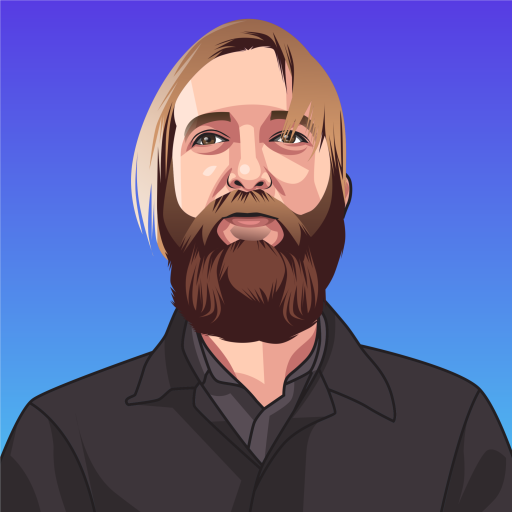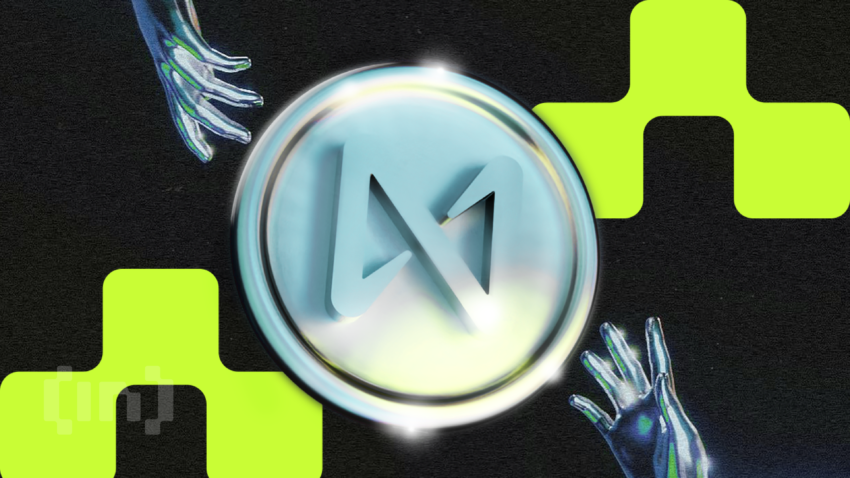Several crypto projects are working on creating scalable networks that can support large amounts of activity. There are numerous technical aspects to this, and one particularly unique approach has been undertaken by the NEAR Protocol. Does this make NEAR Protocol a potential rival to Ethereum, and will its native token, NEAR, prove to be a good investment in the months and years ahead? Let’s dive into how the system works and how it can benefit crypto users.
KEY TAKEAWAYS
➤ NEAR Protocol is a blockchain that uses a unique sharding technology called Nightshade to improve scalability.
➤ It facilitates cross-chain interoperability with Ethereum via the Rainbow Bridge and offers Aurora, an Ethereum-compatible layer-2 solution.
➤ Co-founded by Illia Polosukhin and Alexander Skidanov, NEAR focuses on user and developer usability.
➤ The native NEAR token is used for staking, transaction fees, and governance, bootstrapping the ecosystem for developers and validators.
What is the NEAR Protocol?
NEAR Protocol is, essentially, a decentralized app platform. The platform focuses on user and developer usability. It is seen by many as a competitor to Ethereum. Its blockchain is a smart contract platform and endorses a proof-of-stake (PoS) mechanism.
NEAR is the native token of the NEAR Protocol, and it’s used to store data on the platform as well as for transaction fees. Those who hold NEAR may also use tokens for staking, which allows them to become transaction validators and contribute to network consensus.
Near was created by NearCollective. It is a community-run cloud computing platform that hosts decentralized applications (DApp). It is also, both user and developer-friendly. This is essential in establishing it as the go-to network for casual crypto users as well as DApp devs.
NEAR Protocol’s blockchain aims to compete against other similar platforms using its sharding solutions. Its developers have branded it “Nightshade.” Sharding is a technology that has often been spoken about in the crypto community.
Cross-chain interoperability
NEAR allows cross-chain interoperability via the Rainbow Bridge. It includes a layer-2 solution it has dubbed Aurora. ERC-20 tokens and other assets can be bridged from the Ethereum blockchain to the NEAR Protocol. This allows users to access higher transaction throughput while paying lower fees.
NEAR Protocol’s unique aspects
Near Protocol is, effectively, looking to compete with projects like Ethereum for the attention of crypto enthusiasts. To properly do this, it had to provide a different company philosophy from its rivals. Technological innovation and sustainable growth are part of the NEAR Protocol’s core values. But what are some of NEAR’s key features?
The concept of sharding is central to NEAR Protocol’s design. Nightshade is the name of its sharding solution. This technology is expected to improve the efficiency of data retrieval and scaling.
Sharding splits up a blockchain into separate chains or shards for processing. This distributes the processing of transactions across multiple clusters of nodes. Each node will only process a fraction of the network’s transactions.
Nightshade uses block producers and validators on NEAR to process transaction data simultaneously across multiple shards. To finalize transactions, these parts are processed and stored on NEAR Protocol’s main blockchain.
How NEAR Protocol Started

Illia Polosukhin and Alexander Skidanov co-founded NEAR Protocol in June 2017. The two have a background in math and computer sciences. The two Ukrainians were driven by a clear goal in creating their company, create a fully scalable blockchain solution. According to them, this was something that was missing from the crypto market at the time.
NEAR Protocol was designed as an easy-to-use platform where independent developers could run their DApps. To achieve this, Polusukhin and Skidanov embraced a proof-of-stake mechanism over the established proof-of-work system.
The mainnet was launched in April 2020. Network validators voted in October 2020 to allow token transfers. NEAR’s Rainbow Bridge was launched in March 2021.
Near Protocol was initially designed as a platform for machine learning. Near.ai was its first name. While investigating, the two founders began learning about smart contracts and cryptocurrency. A shared fascination with blockchain technology drove the two computer scientists to study and learn more.
How does NEAR Protocol work?
NEAR has a lot of technical features that set it apart from other projects when it first began. This can be summed up as its choice to use PoW over PoS, sharding, bridging, and DApps. All of these features collectively make NEAR protocol what it is today. Here is a breakdown of each.
Embracing PoS
NEAR uses a delegated PoS blockchain. The PoS model is considered superior in some regards to PoW. This is one of the reasons why it is embraced by NEAR. With PoS users merely have to pledge their tokens to qualify for authenticating transactions on the network.
Additionally, PoS is more energy efficient than PoW. PoW requires the redundant processing of algorithms to select a miner and create an upfront cost for producing blocks, in case a miner tries to attack the network.
PoS, on the other hand, only requires you to use coins as collateral, creating a sort of mutually assured destruction if you decide to attack the network.
Nightshade
Near’s sharding system is different from other cryptocurrencies. On NEAR, all shards are part of the same blockchain. They are not separate. This is opposed to blockchains like Zilliqa and Polkadot, which have separate blockchains.
Nightshade adds a snapshot of each shard’s current state to every block on the NEAR blockchain. Each shard has its own set of validator nodes that broadcast the current state of each shard whenever a block is created.
A mechanism called Doomslug is another important component of NEAR. This allows validator nodes to take turns creating blocks. Each turn lasts for 12 hours. NEAR generates a new block approximately every second.
NEAR block rewards are provided at a rate of 90% to delegator staking pool validators and staking validators. The remaining 10% goes towards the NEAR Treasury. The NEAR Foundation manages and maintains the Treasury.
On August 22, 2024, NEAR upgraded to Nightshade 2.0. Some of the upgrades included stateless validation, more shards, and lower hardware requirements.
Rainbow Bridge
NEAR Protocol’s Rainbow Bridge is an application that allows participants to quickly transfer Ethereum assets like ERC-20 tokens, NFTs, or information between Ethereum and NEAR.
To move tokens from Ethereum into NEAR Protocol, and vice versa, the user must first deposit tokens in an Ethereum smart contract. These tokens will then be locked. Then, new tokens are created on the NEAR Platform. These represent the original tokens.
The smart contract stores the original funds in storage. However, it allows the user to reverse the process if they wish to retrieve the tokens. The bridge was designed to be protocol-agnostic. Ultimately, it can serve as a communication tool between NEAR and any other chain that utilizes smart contracts.
Aurora
The Aurora Network gained a lot of attention within the NFT community. Many of the users attracted by the potential of NFTs were put off by the transaction costs and slow confirmation speeds of Ethereum. Therefore, a scaling solution needs to ensure that crypto transactions become fast and cheap.
Aurora, which functions on NEAR’s network, offers to provide an answer to this problem. It is an Ethereum Virtual machine (EVM). It functions on the NEAR Protocol blockchain.
As mentioned, its goal is to scale the Ethereum network. Developers can use this platform to run their apps on Ethereum-compatible, high throughput, scalable, and secure platforms at lower transaction costs. This is of great benefit both for the developers and their users. AURORA is the native token of this network.
The network offers Ethereum developers a layer-2 solution that helps increase speed and scalability. Transactions occur in a matter of seconds because of the NEAR network. The Aurora Bridge also facilitates trustless transfers of ETH tokens between Aurora and Ethereum.
NEAR Protocol use cases
Several high-profile crypto DApps are on NEAR. And, the protocol is gaining interest from more and more developers. Flux, Mintbase, Paras, and NPunks are some of the projects that are utilizing the technology’s infrastructure.
Paras
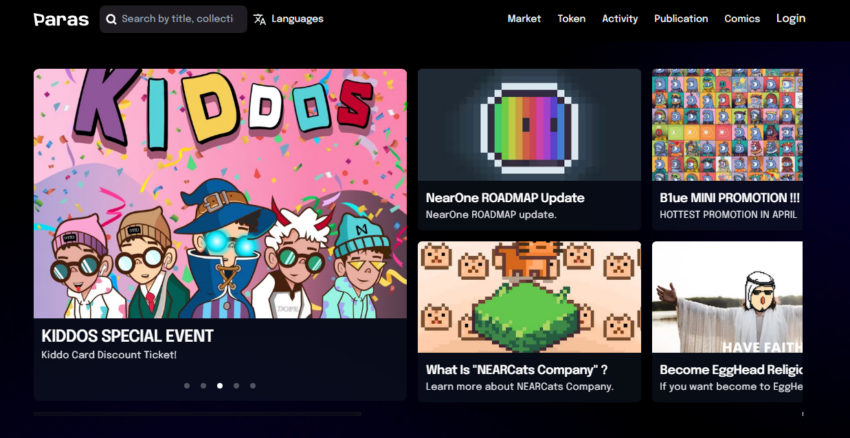
The first in our lineup, Paras, is a marketplace for NFTs. It uses the IPFS/Filecoin and NEAR Protocol. Paras can offer a combination of fast and low-cost transactions with efficiency and security thanks to NEAR.
NEAR transactions are quick (1 to 2 seconds) and cost-friendly at a mere few cents. Artists can quickly start, and novice NFT buyers, as well as experienced collectors, can purchase and sell NFTs almost effortlessly.
Paras endorsed NEAR because of the Rainbow Bridge. PARAS is the native token of the platform. It has a total supply of 100 million. You can use it for exclusive events or DAO governance. NFT-based games of some notoriety have already appeared on Paras. Galaxy Online, Metamon, and OP games are platforms that already utilize the NEAR-backed platform.
Paras connects all projects to its marketplace. It also supports secondary sales transactions. It aims to focus on a curated approach to NFTs and the community surrounding it.
Mintbase

Next on our list is Mintbase. It is a global platform that strives to make NFT creation simple. Firstly, it does not require any technical knowledge. Users can sell their digital art, musicians can create and sell music NFT, and event organizers may use Mintbase to sell tickets.
Its team is from Portugal. It aims to preserve digital ownership and prevent the scarcity of digital assets. To instantly mint non-fungible tokens (NFTs), the platform uses Ethereum’s ERC-721 token standard.
Mintbase’s first step in minting NFTs was to create a digital store that sells NFTs. The platform’s users needed to create a smart agreement and pay an Ethereum gas fee.
Flux

Straying from the focus of NFTs, Flux is an open market protocol that launched on NEAR because of its promise of quick, cheap, scalable solutions. The Flux team originally started their journey on Ethereum. However, they launched their product on NEAR.
The protocol officially debuted in August 2020 after 14 months of development. The project tried to build on Ethereum in the beginning stages of the project, but ran into security and cost issues. Simply put, NEAR provided a better, cheaper solution for Flux and for its future users.
NPunks

As the name suggests, NPunks is an NFT collection that is based on the concept and popularity of the CryptoPunks collection. The project runs on the NEAR Protocol. The collection includes 10,000 NPunks. Each NFT has different attributes. This makes them unique.
The distinctive feature of the project is that NPunk purchases are random. In this way, the developers hope to create a fair distribution of the NFTs.
Roadmap and development history
Thus far, the NEAR Protocol team has managed to stick to a complex roadmap and timetable. NEAR’s multi-stage mainnet rollout began in Apr. 22, 2020. The proof-of-authority (PoA) consensus system establishes the network. NEAR Foundation, a non-profit organization that supports protocol development, operated the only nodes.
During Phase 1, NEAR began onboarding third-party validators. In Phase 2, the final planned stage in Near’s gradual mainnet rollout occurred.
The governance responsibilities transferred to the community in this second phase as a result of on-chain governance voting. This stage also unlocked protocol rewards and token transfers.
For 2022, NEAR Protocol’s team promised complete decentralization. As mentioned earlier, the protocol also upgraded its Nighshade mechanism in August of 2024.
What is NEAR?
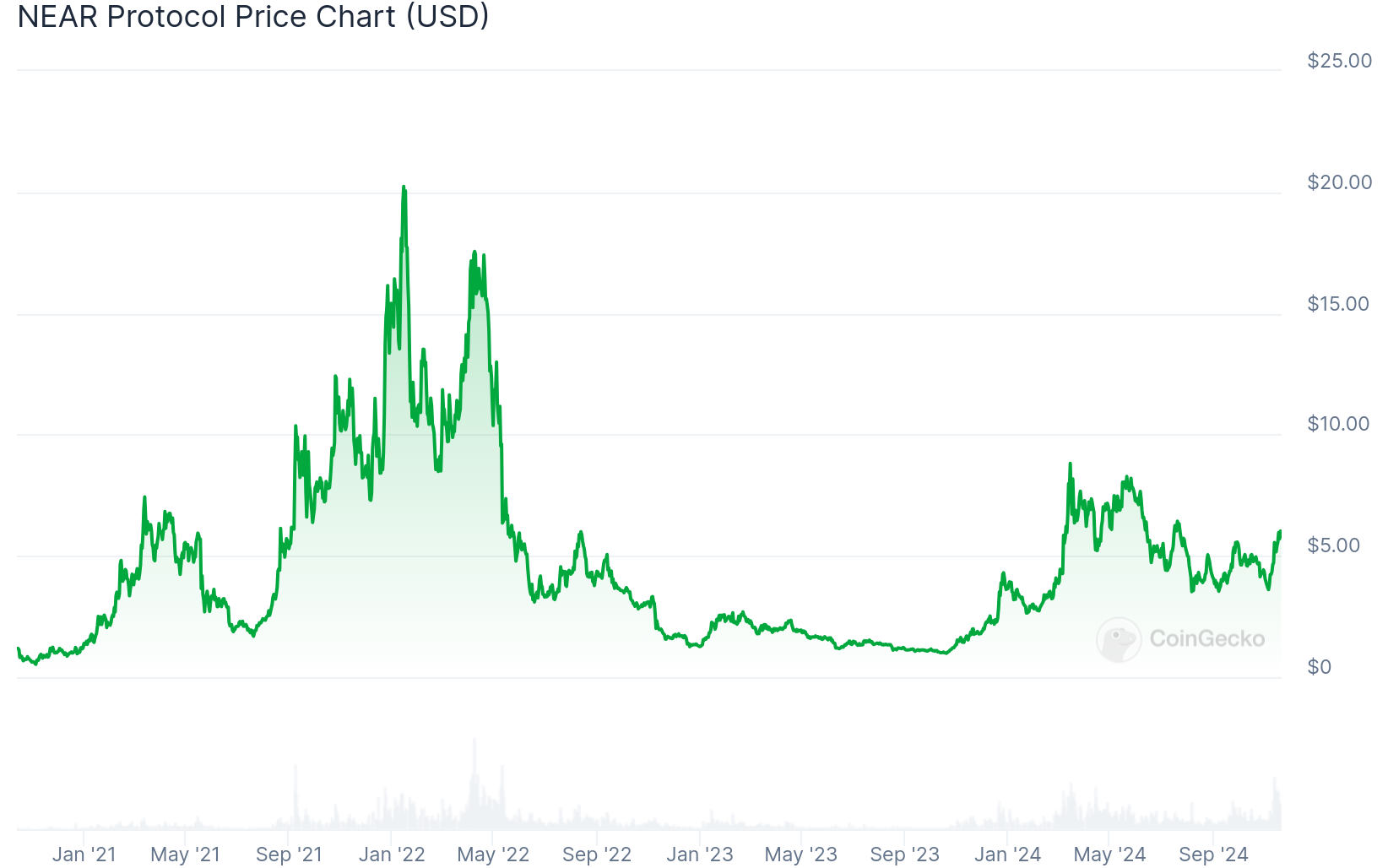
NEAR Protocol’s native token is NEAR. Token holders who participate in the network consensus are transaction validators who can stake NEAR tokens.
Transaction validators are eligible for a NEAR token reward in each epoch. The rewards amount to 4.5% annually of the total NEAR supply.
Smart contract developers receive a percentage of transaction fees generated by their contracts. The rest of each transaction fee goes to the NEAR token. This increases its scarcity.
NEAR also has a protocol Treasury. This receives 0.5% annually of the total NEAR supply to invest in the development and improvement of the ecosystem.
NEAR token distribution
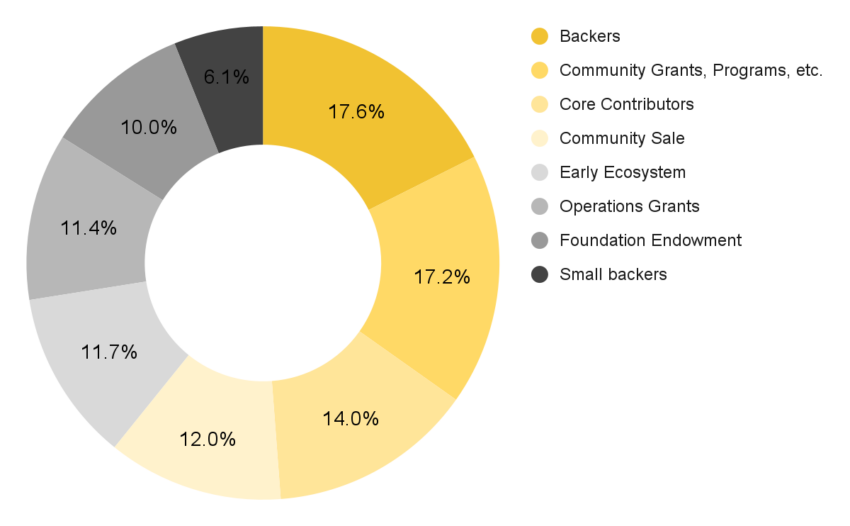
The NEAR token has an uncapped supply. The circulating supply of NEAR is nearly 1.2 billion as of May 2025.
NEAR Protocol — a potentially revolutionary project
Platforms that offer lower transaction costs and higher throughput are of vital importance in the crypto space. This is all the more true as mainstream adoption of crypto grows. NEAR’s scaling solutions are attractive to developers who want to create more efficient DeFi products.
The future looks bright for NEAR. But can it be an Ethereum killer? Perhaps, this is not the right way to judge its potential. While NEAR could become an industry leader, it is important to focus on what it can achieve right now.
Frequently asked questions
What is NEAR Protocol?
Is NEAR Protocol worth investing in?
What blockchain is NEAR Protocol on?
Disclaimer
In line with the Trust Project guidelines, the educational content on this website is offered in good faith and for general information purposes only. BeInCrypto prioritizes providing high-quality information, taking the time to research and create informative content for readers. While partners may reward the company with commissions for placements in articles, these commissions do not influence the unbiased, honest, and helpful content creation process. Any action taken by the reader based on this information is strictly at their own risk. Please note that our Terms and Conditions, Privacy Policy, and Disclaimers have been updated.
